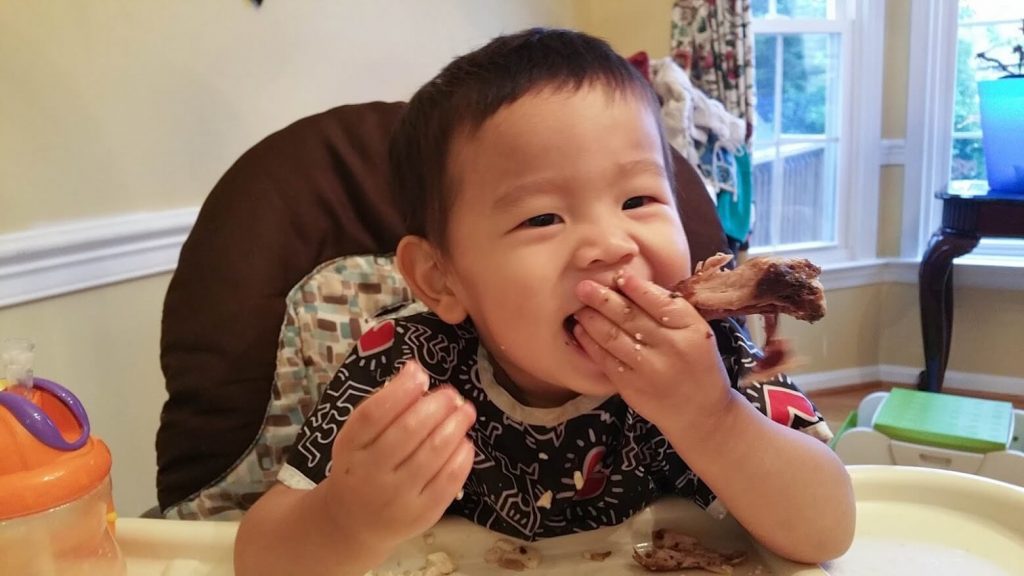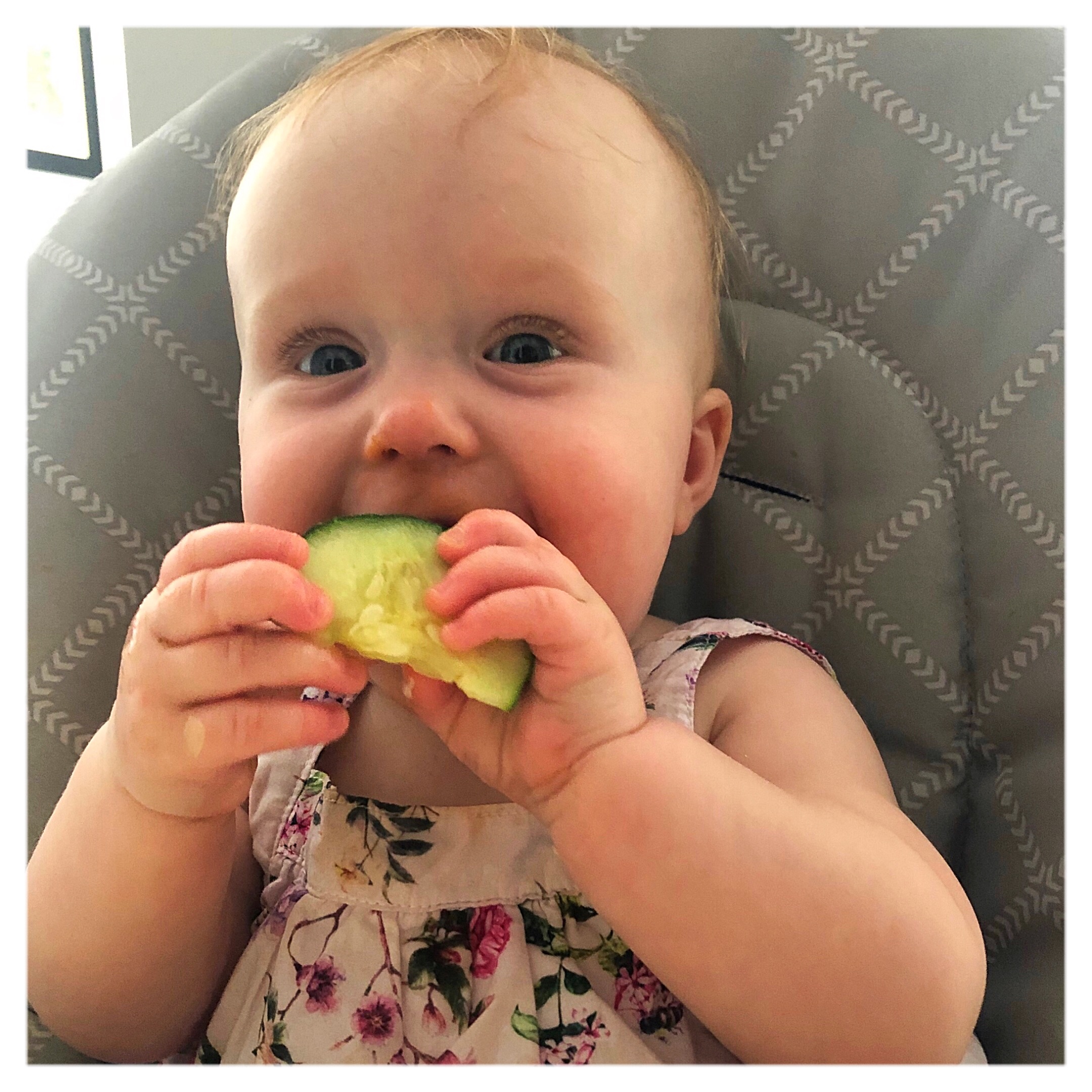Baby Led Weaning. You have likely seen Instagram posts of kids eating vegetables, or blog posts and articles about the benefits of baby led weaning. It is clearly gaining popularity as an option for transitioning children onto solid foods instead of the more traditional approach of introducing purees by spoon before table foods. So… what is it?
Baby Led Weaning involves introducing your child to bigger pieces of foods that they can pick up independently and bring to their mouth. The independent exploration and experience help them develop the necessary skills to successfully manage solid foods, first with their hands and then with their mouth. As with many actions’ children learn, their control starts with bigger pieces and then becomes more finely tuned, allowing them to manage smaller pieces.
At first, your child may just bring the food to their mouth and gnaw it, then learn to break pieces off, eventually developing the control to hold the food still for biting, mashing, and early chewing. Children are also able to develop the safety skills to protect their airway while eating such as gagging or pushing pieces of food out with their tongue. As children learn to control small pieces of food, their fine motor skills also improve, and they can pick up smaller pieces of food. Eventually, these small foods are more easily chewed and swallowed after practice with the larger pieces.

When should you start Baby Led Weaning?
It is recommended to start baby led weaning when your pediatrician has talked to you about starting solids with your little one. This is generally about 6 months, which is also the time in development when children are learning the skills necessary for eating. This includes trunk and head control, interest in food, and developing oral motor skills to eat. A few reasons why baby led weaning is beneficial to a child who is in this developmental stage are:
- Infants develop the hand control to pick up bigger foods before they develop the pincer grasp for small foods
- Infants often engage in activities that are self-motivating, interesting, and meaningful. They are not designed to learn through an adult-directed learning, which often happens when an adult feeds a child.
- Infants have reflexes and drives that facilitate this process that are no longer present at a later age, including:
- Bringing items hand-mouth to explore their mouth
- Gag reflex remains at the front of the mouth, which is important for safety
- Tongue thrust is still present, allowing children to push foods out that are not safe
- Brain development at this time allows for infants to learn and recognize that chewing on small banana pieces is slightly different than chewing on a teething toy.
- Babies are “in charge” of this process, therefore they can control how much they eat. This is consistent with the development of self-regulation and the division of responsibility that we know is crucial when establishing a healthy relationship with food.
- Babies can learn to explore at their own pace, and therefore may become less resistant and afraid of food
It is helpful to know that there has been research in this area to investigate the importance of this process and how it benefits babies. There is a study done by the National Institutes of Health that looked at developmental skills and available evidence of baby-led weaning. This study found that this is an appropriate process for children who are learning to eat. It is important to always use your judgement when determining readiness for baby-led weaning and a conversation with your pediatrician is recommended. Your child may be ready when they are able to sit independently with good head control and be stable in a chair with support.
Although the following considerations should be addressed for all children, those with developmental delays or motor deficits may need more support or more time to develop complete readiness.
- Sitting stability: If your child is unstable, you may need to wait until they are steadier and ensure they are well supported. It is hard to develop fine motor control when you are working to keep your body stable. Imagine drinking from an open cup while walking a tightrope and you have an idea on how it might feel to work on drinking and keeping your balance at the same time!
- Hand to mouth control: Your child may have difficulty with learning self-feeding skills if they have difficulty with smaller hand movements. Wait until their motor control is mature enough to be more consistent in order to keep them safer and to avoid frustration.
- Oral control: It is important for your child to respond to things in their mouth in a timely fashion so they can push out big pieces. If your child has had any difficulties with oral motor coordination in the past, talk to your therapist or a responsive feeding professional about their opinion on getting started.
If you are more comfortable and feel it is more appropriate for your baby to learn solids through the traditional progression, then do what feels right for your family. There can be a lot of information out there to tell you something is “right” or “wrong,” but providing a responsive family mealtime environment for your child means it should be comfortable and manageable for both of you. It is okay to do a mix of baby led weaning as they show interest and providing purees in the more traditional approach. There is no such thing as a perfect mealtime and as long as you are respecting your child’s cues, initiation, and refusals, you are doing it RIGHT!

Be the first to comment